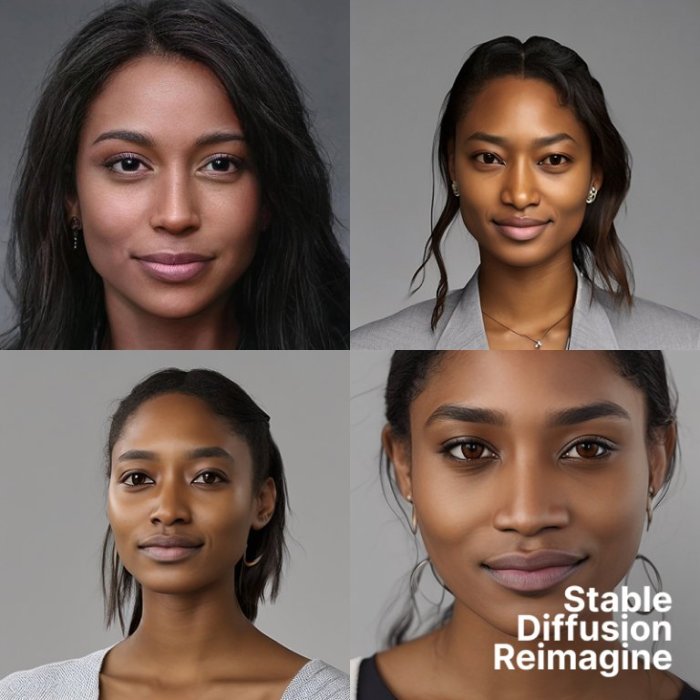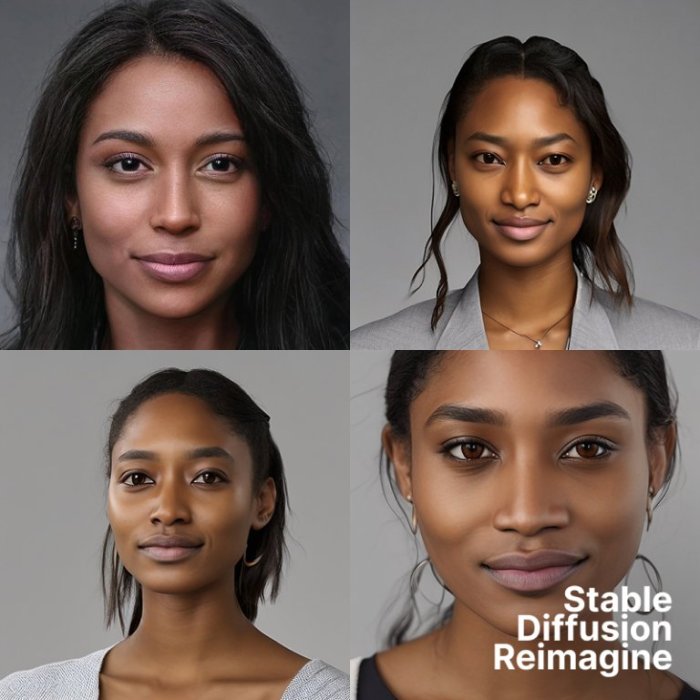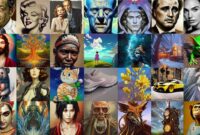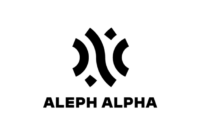Stability AI Launches Stable Diffusion 3 Image Generator, a groundbreaking leap in the field of image generation. This powerful new tool builds upon the success of its predecessors, introducing exciting features and advancements that redefine the boundaries of what’s possible in AI-driven art creation.
Stable Diffusion 3 represents a culmination of years of research and development, pushing the limits of image generation technology to unprecedented heights.
Stable Diffusion 3 is not just about creating images; it’s about unlocking creative potential. It empowers artists, designers, and anyone with an imagination to bring their visions to life with unparalleled ease and precision. Whether you’re crafting intricate landscapes, fantastical creatures, or realistic portraits, Stable Diffusion 3 provides the tools to transform your ideas into stunning visuals.
Stable Diffusion 3: A New Era in Image Generation

Stable Diffusion 3 is a significant leap forward in the field of AI-powered image generation. It represents a culmination of advancements in text-to-image technology, offering unparalleled capabilities in creating realistic and highly detailed images based on text prompts. This release marks a pivotal moment in the evolution of image generation, offering both seasoned artists and curious beginners new avenues for creative expression.
Key Features and Improvements
Stable Diffusion 3 boasts a range of enhancements compared to its predecessors, pushing the boundaries of what’s possible with AI-driven image creation.
- Enhanced Image Quality:Stable Diffusion 3 generates images with significantly higher resolution and fidelity. The model’s improved training data and refined algorithms result in sharper details, more nuanced textures, and a greater sense of realism.
- Improved Text-to-Image Translation:The model’s ability to interpret text prompts has been refined, leading to more accurate and relevant image outputs. Stable Diffusion 3 can now understand complex and nuanced descriptions, generating images that better reflect the intended concepts.
- Expanded Creative Control:Stable Diffusion 3 provides users with greater control over the image generation process. The model offers a wider range of parameters and settings, allowing users to fine-tune aspects like style, composition, and artistic choices.
- Advanced Upscaling and Refinement:Stable Diffusion 3 incorporates advanced upscaling techniques that enable users to enhance the resolution and clarity of generated images. This feature allows for the creation of high-quality images suitable for various purposes, including print media and digital art.
History of Stable Diffusion, Stability ai launches stable diffusion 3 image generator
Stable Diffusion, developed by Stability AI, emerged as a powerful open-source alternative to other text-to-image models. Its release in 2022 democratized access to advanced image generation technology, empowering individuals and organizations to explore its potential. Stable Diffusion 3 builds upon the success of its predecessors, incorporating learnings from the community and pushing the boundaries of AI-powered image generation.
Technical Aspects of Stable Diffusion 3
Stable Diffusion 3 is a significant leap forward in the field of text-to-image generation. This new iteration builds upon the foundation of its predecessors, introducing innovative technical advancements that contribute to its impressive image quality and capabilities. This section delves into the technical underpinnings of Stable Diffusion 3, exploring the algorithms, training process, and underlying principles that power its image generation prowess.
Diffusion Models
Diffusion models are a class of generative models that have gained prominence in recent years, particularly in the domain of image generation. The core concept behind diffusion models is to gradually introduce noise into an image until it becomes indistinguishable from random noise.
The model then learns to reverse this process, starting with random noise and gradually denoising it until it reconstructs the original image. The training process of a diffusion model involves two key phases:
- Forward Diffusion:In this phase, the model learns to add noise to an image progressively. It starts with a clean image and gradually introduces noise at each step, transforming the image into a noisy representation. This process can be likened to slowly blurring an image until it becomes unrecognizable.
- Reverse Diffusion:This is the crucial phase where the model learns to generate new images. It starts with a random noise input and then utilizes its knowledge of the forward diffusion process to gradually remove noise, step-by-step. Each step of the reverse diffusion process involves denoising the input, progressively reconstructing the image from noise until it resembles a coherent and realistic image.
Stable Diffusion 3 employs a powerful diffusion model, refined through extensive training on a vast dataset of images. This training process allows the model to learn the complex patterns and structures present in real-world images, enabling it to generate high-quality, diverse, and realistic images based on text prompts.
Capabilities and Applications of Stable Diffusion 3
Stable Diffusion 3, the latest iteration of the popular open-source text-to-image AI model, has significantly enhanced its capabilities, pushing the boundaries of image generation. This new version empowers users with a wider range of creative possibilities and opens doors to innovative applications across various fields.
Image Generation Tasks
Stable Diffusion 3 excels at performing a diverse array of image generation tasks, showcasing its versatility and power. The model can generate high-quality images from text prompts, seamlessly blending different styles, and incorporating intricate details. It can create photorealistic images, artistic renderings, and even manipulate existing images to achieve desired outcomes.
- Photorealistic Images:Stable Diffusion 3 can generate images that are indistinguishable from real photographs, capturing realistic textures, lighting, and depth. This capability has implications for various applications, including stock photography, e-commerce, and visual storytelling.
- Artistic Styles:The model can mimic the styles of renowned artists, such as Van Gogh, Monet, or Picasso, enabling users to create art in diverse artistic styles. This opens avenues for artistic expression, allowing users to experiment with different styles and create unique artwork.
Investigate the pros of accepting eu backs 100 women founded deep tech startups in your business strategies.
- Image Manipulation:Stable Diffusion 3 can manipulate existing images, adding elements, removing objects, or changing backgrounds. This capability is useful for photo editing, restoration, and creating artistic effects.
- Conceptual Images:Stable Diffusion 3 can generate images based on abstract concepts or imaginative prompts, allowing users to visualize their ideas and explore uncharted territories of creativity.
Creative Applications
Stable Diffusion 3 has a wide range of creative applications, empowering artists, designers, and other creative professionals to push boundaries and explore new possibilities. The model can be used for:
- Concept Art:Stable Diffusion 3 can generate concept art for movies, games, and other creative projects, enabling artists to quickly visualize ideas and explore different design options.
- Graphic Design:The model can create unique graphics, logos, and illustrations for various design projects, including branding, marketing, and web design.
- Fashion Design:Stable Diffusion 3 can generate realistic images of clothing designs, enabling fashion designers to experiment with different fabrics, patterns, and styles.
- Art Generation:The model can be used to create unique and expressive artwork, pushing the boundaries of traditional art forms and exploring new artistic styles.
Industry Applications
Stable Diffusion 3 has the potential to revolutionize various industries by automating tasks, enhancing workflows, and creating new opportunities. Here are some potential applications:
- E-commerce:Stable Diffusion 3 can generate high-quality product images, enabling e-commerce businesses to create visually appealing product catalogs and enhance online shopping experiences.
- Advertising:The model can generate creative and engaging advertising visuals, enabling marketers to target specific audiences and increase campaign effectiveness.
- Education:Stable Diffusion 3 can be used to create educational materials, such as illustrations, diagrams, and interactive visualizations, making learning more engaging and effective.
- Healthcare:The model can generate images for medical research, aiding in the diagnosis and treatment of diseases, and facilitating the development of new medical technologies.
Comparison with Other Image Generators: Stability Ai Launches Stable Diffusion 3 Image Generator
The release of Stable Diffusion 3 has ignited a wave of excitement in the AI art world, prompting comparisons with other prominent image generation models. While Stable Diffusion 3 boasts several notable advancements, it’s crucial to understand its strengths and weaknesses relative to its competitors to determine its suitability for various creative endeavors.
Comparison of Stable Diffusion 3 with Other Image Generation Models
The landscape of AI image generation is rapidly evolving, with several models vying for attention. Stable Diffusion 3 stands out for its unique capabilities and limitations, offering a distinct approach to image creation compared to its peers.
Strengths of Stable Diffusion 3
- Open-source nature:Unlike proprietary models like DALL-E 2, Stable Diffusion 3 is open-source, allowing developers and researchers to access, modify, and enhance the model. This fosters innovation and community-driven development, leading to a faster pace of improvement.
- High-resolution image generation:Stable Diffusion 3 can generate images at resolutions exceeding those produced by earlier versions, making it suitable for high-quality print or digital outputs.
- Control over image generation:Users can exert a significant degree of control over the image generation process, specifying details like style, composition, and subject matter through text prompts.
- Image-to-image generation:Stable Diffusion 3 can generate new images based on existing ones, allowing for creative variations and enhancements.
Weaknesses of Stable Diffusion 3
- Limited control over specific details:Despite its advanced capabilities, Stable Diffusion 3 sometimes struggles to accurately represent fine details or specific features in generated images.
- Potential for biases and ethical concerns:Like other AI models, Stable Diffusion 3 can reflect biases present in its training data, potentially generating images that perpetuate harmful stereotypes or prejudices.
- Computational resources:Running Stable Diffusion 3 requires significant computational resources, which may pose a barrier for users with limited hardware.
Unique Advantages and Limitations of Stable Diffusion 3
Stable Diffusion 3’s open-source nature presents both advantages and limitations.
- Advantages:
- Faster development and innovation:The open-source community can contribute to the model’s improvement, leading to rapid advancements and new features.
- Customization and flexibility:Developers can adapt and modify Stable Diffusion 3 to suit specific needs or applications.
- Limitations:
- Potential for misuse:The open-source nature could enable malicious actors to exploit the model for unethical purposes, such as generating deepfakes or creating harmful content.
- Lack of centralized control:The lack of centralized control over the model’s development could lead to inconsistencies or fragmentation in its functionality.
Comparison with DALL-E 2
DALL-E 2, a proprietary model developed by OpenAI, is another prominent image generation model. Both DALL-E 2 and Stable Diffusion 3 excel in generating high-quality images from text prompts. However, DALL-E 2 stands out for its ability to generate realistic images of objects and scenes that are difficult for Stable Diffusion 3 to capture accurately.
“DALL-E 2 is known for its impressive ability to create photorealistic images with a high level of detail, particularly in representing complex scenes and objects.”
Conversely, Stable Diffusion 3 offers greater control over the image generation process, allowing users to fine-tune parameters and create unique artistic styles.
Comparison with Midjourney
Midjourney is a popular AI art generator that operates as a subscription-based service. Unlike Stable Diffusion 3, Midjourney is not open-source and relies on a proprietary algorithm. Midjourney is known for its ability to generate visually appealing and imaginative images, often with a distinctive artistic flair.
“Midjourney excels at generating images with a dreamlike or surreal quality, often capturing a unique aesthetic that sets it apart from other image generation models.”
However, Midjourney offers less control over the image generation process compared to Stable Diffusion 3. Users have limited options to adjust parameters or specify details beyond the initial text prompt.
Comparison with Imagen
Imagen, developed by Google AI, is another powerful image generation model that leverages a text-to-image diffusion process. While Imagen exhibits impressive image quality and detail, it remains a proprietary model, limiting its accessibility to the broader community.
“Imagen is known for its ability to generate highly realistic images with a high level of detail, often exceeding the quality of images generated by other models.”
Stable Diffusion 3, on the other hand, offers greater flexibility and customization options, allowing users to experiment with different styles and techniques.
Future Directions and Impact of Stable Diffusion 3
Stable Diffusion 3 represents a significant leap forward in AI-powered image generation, pushing the boundaries of what’s possible with this technology. Looking ahead, its impact will be felt across various sectors, shaping the future of creativity, communication, and even our understanding of reality.
Potential Developments and Impact
The rapid evolution of AI image generation technologies like Stable Diffusion 3 suggests that the future holds even more remarkable advancements. The focus will likely shift towards:
- Enhanced Realism:Future iterations will aim to generate images with even greater photorealism, blurring the lines between reality and AI-generated content. This could have significant implications for filmmaking, advertising, and virtual reality applications.
- Improved Control and Customization:Users will demand greater control over the creative process, enabling them to fine-tune every aspect of the generated image, from style and composition to specific details and textures.
- Integration with Other AI Technologies:Stable Diffusion 3 could be integrated with other AI technologies, such as natural language processing (NLP), to create even more powerful and versatile tools. For example, users could simply describe an image in words, and the AI would generate it based on the text input.
- Increased Accessibility:As the technology matures, it will become more accessible to a wider audience, empowering individuals and businesses to create high-quality visual content without requiring specialized skills or expensive software.
Ethical Considerations and Challenges
While the potential benefits of Stable Diffusion 3 are undeniable, its widespread adoption also raises significant ethical concerns:
- Deepfakes and Misinformation:The ability to generate realistic images opens the door to malicious applications, such as creating deepfakes that can be used to spread misinformation or damage reputations. This necessitates the development of robust detection and verification mechanisms to ensure the authenticity of visual content.
- Copyright and Intellectual Property:The use of AI image generators raises questions about copyright and intellectual property. Who owns the rights to an AI-generated image? Is it the creator of the model, the user who generated the image, or both? These issues will require careful consideration and legal frameworks to ensure fair use and protect creators’ rights.
- Bias and Discrimination:AI models are trained on vast datasets, and these datasets can contain biases that reflect societal prejudices. This can lead to AI-generated images that perpetuate harmful stereotypes or discriminate against certain groups. It’s crucial to address these biases in the training data and development of AI models to ensure ethical and inclusive outcomes.
Impact on Creative Industries
Stable Diffusion 3 has the potential to revolutionize creative industries, empowering artists, designers, and content creators in unprecedented ways:
- New Creative Possibilities:AI image generation tools can help artists explore new creative avenues, generating ideas, experimenting with different styles, and overcoming creative blocks. It can also be used to create unique and personalized art pieces, tailored to individual preferences.
- Increased Efficiency and Productivity:Stable Diffusion 3 can streamline the creative process, allowing artists to generate initial concepts, explore variations, and create high-quality images more efficiently. This can free up their time to focus on more complex and nuanced aspects of their work.
- Democratization of Creativity:By making image generation tools more accessible, Stable Diffusion 3 can empower individuals with limited artistic skills to create compelling visual content. This can lead to a more diverse and inclusive creative landscape.





